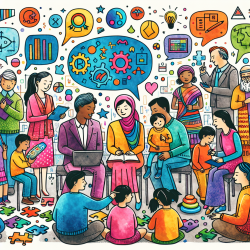Introduction
Summer programming offers a vital opportunity to support the health and development of children from low-income urban households. The recent study titled "Patterns of participation in summer programming among United States’ elementary children from low-income urban households: Results from the project SWEAT study" sheds light on the participation patterns and barriers faced by these children. This blog aims to guide practitioners in leveraging these insights to enhance their skills and improve outcomes for marginalized children.
Understanding the Study
The Project SWEAT study was a prospective observational study conducted in low-income urban neighborhoods. It aimed to characterize participation patterns in summer programming among elementary children. Key findings revealed that many marginalized children do not participate in summer programming, and those who do have low attendance rates. Notably, boys were more likely to participate than girls, and Black children had higher attendance rates compared to non-Black children.
Implications for Practitioners
Practitioners can utilize these findings to address the barriers and improve participation in summer programming. Here are some actionable strategies:
- Identify Barriers: Understand the specific barriers faced by different demographic groups, such as transportation issues, childcare responsibilities, and socio-cultural influences.
- Tailored Interventions: Design interventions that cater to the unique needs of girls and non-Black children, who were found to have lower participation rates.
- Community Engagement: Collaborate with community organizations to provide accessible and inclusive programming that addresses the needs of low-income families.
- Data-Driven Decisions: Use data from studies like Project SWEAT to inform program design and evaluate the effectiveness of interventions.
Encouraging Further Research
The study highlights the need for further research to understand the barriers to participation in summer programming, particularly through a social determinants of health lens. Practitioners are encouraged to engage in research initiatives that explore these barriers and develop evidence-based solutions. Collaborative research efforts can lead to more equitable access to summer programming and improved outcomes for marginalized children.
Conclusion
The Project SWEAT study provides valuable insights into the participation patterns of low-income children in summer programming. By understanding these patterns and addressing the barriers, practitioners can play a crucial role in transforming summer programming into a powerful tool for positive change. Together, we can create a more equitable and inclusive environment for all children.
To read the original research paper, please follow this link: Patterns of participation in summer programming among United States’ elementary children from low-income urban households: Results from the project SWEAT study.










